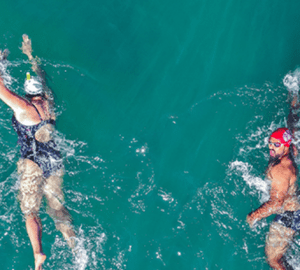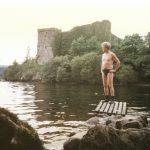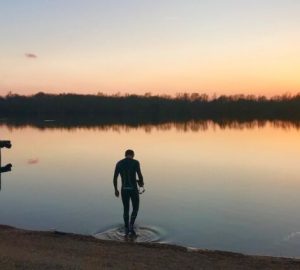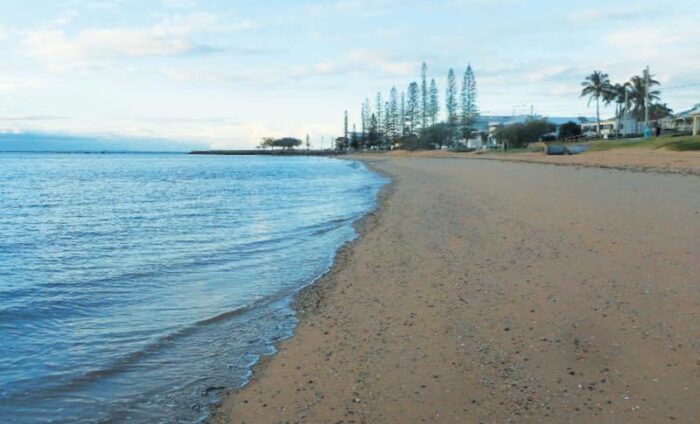
Wild swimming spot – Queens Beach North, Scarborough, Australia
Clear water and turtles make Queens Beach North Mark Otter’s favourite swim spot. Just don’t mention the jet skiers…
My favourite wild swimming spot is Queens Beach North in the northern Brisbane suburb of Scarborough. I first found this magical place when a friend who lives nearby told me that he had spied an old bloke swimming up and down the beach’s small bay. Next time I saw this friend, he said: “Now there are two old blokes swimming up and down the bay”. “Yes,” I replied “and the second one is me”.
That was a few years ago now. These days, a group of us under the informal banner of ‘Otter Aquatics’ gather a couple of times a week for a very non-competitive swim that can range anything from 500 metres to three or even more kilometres, generally swimming multiples of the 650-metre ‘lap’ between the northern and southern rocks bracketing the bay. If the wind is up, it can be very choppy and quite tough swimming but we adopt the philosophy that “we won’t appreciate the good days if we don’t swim in the bad ones”. And there are many more good ones than bad, even in winter when the sea temperature drops to about 16 degrees Celsius.
So why is this so good, even for those of us who have swum all over the world? The answer is partly to do with the fact that it is home – we all live no more than a 20-minute drive away. But it’s also because the beach is so damn lovely; it’s away from the noisy crowds of the more popular surf beaches to the north and south of Brisbane and the water is, mostly, amazingly clear.
We always see plenty of plant life under the water and often enough sea creatures to make it ‘interesting’. While we haven’t encountered any sharks – neither do we want to – we are very mindful of when not to swim and we always swim in our own ‘pod’ for safety.
We have had a few encounters with marine turtles. Moreton Bay Marine Park, in which ‘our’ beach sits, is one of the few places in the world where large populations of turtles are found so close to a major city. All but one of the world’s seven marine turtle species are found here and there are at least five year-round resident turtle species in the marine park: green, loggerhead, Pacific ridley, flatback and hawksbill and all species are all listed as endangered.
Moreton Bay is one of the most important feeding areas for loggerhead turtles along the east coast of Australia. A few months ago, we spied a loggerhead turtle in distress, so we swam up to it and saw that it had the ropes of a crab pot entangled around its neck and fins. We managed to free the poor creature who then swam away – I’m sure he would have thanked us if he could have.
We live happily and cooperatively with other water and beach users – well, mostly. Anglers in boats or fishing from the rocks are not a problem, neither are kayakers or SUPers. But then there are the jet skiers. One very narrowly missed us on one occasion, the driver going so fast he would have been totally unaware of our yellow-capped heads. We both reached the beach at about the same time so I went over and spoke to him.
“Did you know that this beach is off limits to jet skis?”
“No,” he replied, “I didn’t know that”. It isn’t in fact, but my ruse worked – we haven’t seen him or any of his noisy mates since. Please don’t tell them.
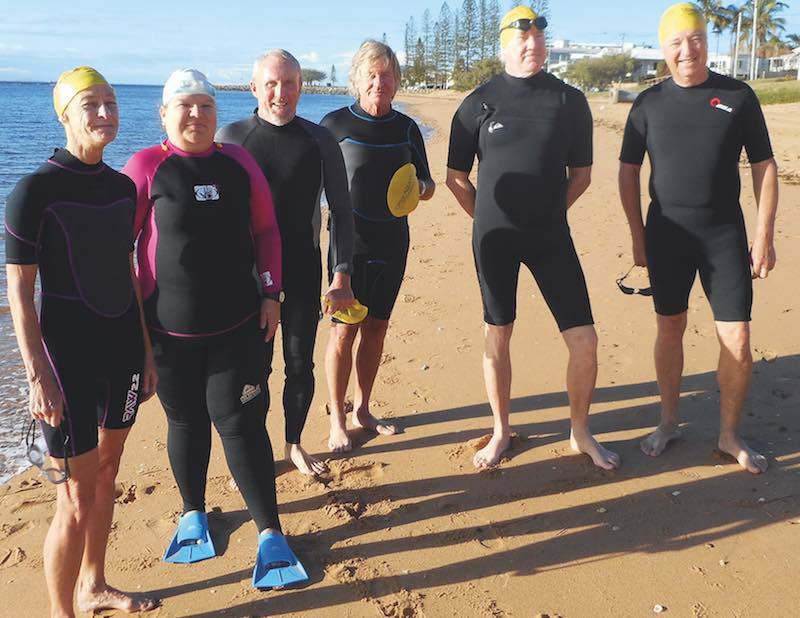
Mark and the Otter Aquatics
Email your favourite wild swimming spot to: editor@outdoorswimmer.com with the subject ‘Wild Swimming’





